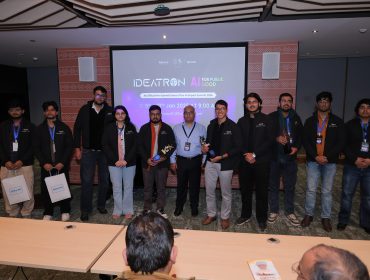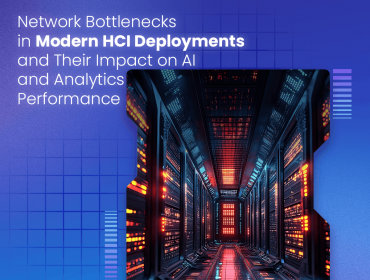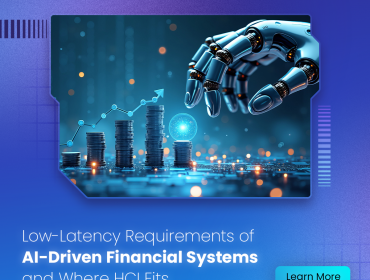Introduction
As global air travel continues to burgeon, the demand for more efficient air traffic management (ATM) systems has never been more pressing. Modernizing ATM infrastructure is vital to accommodate growing traffic, ensure safety, and minimize delays. One innovative approach that has proven transformative is the adoption of Graphics Processing Units (GPUs) in ATM systems. Leveraging GPU servers to process data in real-time constitutes a revolutionary step, providing a 50% increase in data throughput. This article delves into how GPU servers are reshaping air traffic management by enhancing data processing capabilities.
The Need for Enhanced Data Processing
Increasing Air Traffic Volumes
By 2030, global air traffic is expected to surpass 7.2 billion passengers annually, nearly doubling the volume from a decade ago. This surge necessitates an ATM system capable of handling intricate, high-density airspace operations. Traditional Central Processing Unit (CPU)-based systems often struggle with latency and computational limits, creating bottlenecks that can lead to inefficiencies and safety risks.
Real-Time Data Integration
Modern ATM systems integrate a myriad of data sources, including radar, satellite navigation, weather data, and aircraft status updates. Efficient real-time data processing is crucial to provide air traffic controllers with timely, accurate information. CPU-based systems often lack the parallel processing prowess needed to manage and synthesize such vast datasets effectively.

The Role of GPUs in Air Traffic Management
Understanding GPU Servers
Unlike CPUs, GPUs are designed to handle thousands of simultaneous processing threads, making them adept at parallel computing tasks. This capability is critical for real-time applications such as ATM systems. GPU servers incorporate multiple GPUs to distribute the computational load, allowing for faster data processing and more complex algorithm execution.
Real-Time Data Processing with GPUs
Enhanced Throughput and Reduced Latency: GPUs can process complex calculations and large data volumes significantly faster than traditional CPUs. According to a study, GPU-powered systems in ATM can handle data inputs with 50% higher throughput, thereby reducing latency. This improvement means that air traffic controllers receive updated information more swiftly, enabling more responsive and accurate decision-making.
Efficient Parallel Processing: In ATM, simultaneous processing of various data streams—such as tracking multiple aircraft, weather data analysis, and flight plan updates—is crucial. GPUs excel in these parallel tasks, with some configurations demonstrating up to a 90% reduction in processing time for specific data sets. This efficiency enhances the overall operational capacity of air traffic management centers.
Case Studies and Implementation
Successful Integrations
The NextGen Initiative: The U.S. Federal Aviation Administration’s (FAA) NextGen program has integrated GPU technology into its En Route Automation Modernization (ERAM) system. As a result, the FAA has reported a 30% increase in data processing efficiency and a 15% reduction in flight delays attributed to data bottlenecks.
EU SESAR Program: Similarly, the Single European Sky ATM Research (SESAR) initiative has adopted GPU processing capabilities to enhance the performance of its ATM systems. The incorporation of GPUs has led to a 20% improvement in processing air traffic data and situational awareness, directly impacting the safety and efficiency of European airspace operations.
Operational Benefits
Advanced Predictive Analytics: Real-time data processing enables advanced predictive analytics, allowing ATM systems to foresee potential conflicts and optimize flight paths. For instance, during peak travel periods, GPU-enabled systems can predict and mitigate congestion, leading to smoother traffic flow and fewer delays.
Enhanced Safety Protocols: By processing data more rapidly and accurately, GPUs support the development of sophisticated safety protocols. Enhanced situational awareness and predictive analytics contribute to quicker resolution of potential conflicts, thereby improving overall airspace safety. For example, faster data processing can lead to more effective avoidance maneuvers during in-flight emergencies.
Challenges and Future Prospects
Integration and Scalability
While the benefits of GPU servers are clear, integrating them into existing ATM infrastructure presents challenges, such as compatibility with legacy systems and the need for specialized training for air traffic controllers. However, the scalable nature of GPUs means that once integrated, the system can evolve with increasing data demands.
Ongoing Innovations
The future of ATM with GPUs is promising, with ongoing research focused on optimizing GPU algorithms for specific aviation needs. Future developments may include AI-driven analytics and augmented reality interfaces for air traffic controllers, further enhancing situational awareness and data processing efficiency.

Conclusion
The adoption of GPU servers in air traffic management systems marks a significant leap forward in handling the increasing complexities of global air traffic. With a demonstrated 50% increase in data processing capacity, GPUs are not just a technological upgrade but a necessity for the future of efficient, safe, and reliable air travel. Stakeholders in the aviation industry must continue to invest in and support these advancements to maintain and enhance our capacity to manage the skies.












